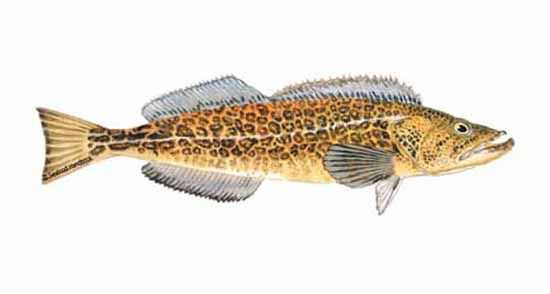Lingcod

Species Details
Ophiodon Elongatus
Hexagrammidae
Scorpaeniformes
Onshore
25 - 85 lbs.
20" - 60"
Lingcod (Ophiodon elongatus)
Lingcods (Ophiodon elongatus) or Ling Cods are a popular saltwater gamefish of the Hexagrammids family. Despite the name, they’re not actually cods but greenlings. They have elongated bodies that narrow toward the tail. Thanks to their wicked set of huge sharp teeth, spiny dorsal fins, and grey, brown, and greenish speckled coloring, they have a pretty gnarly appearance. They are also sometimes called “Buckethead” because of their particularly large head and mouth.
Lingcods are often found in rocky seafloor among seaweeds, kelps, and eelgrass. They use their mottled coloring to blend in their environment and ambush unsuspecting fishes, squids, crabs, octopus, and other smaller lingcods. Adults spawn between December and April, often in shallow waters over rocky reefs with strong tidal currents. They reproduce externally—meaning, the females just deposit their eggs in rocky crevices and leave, while the males find and fertilize them. And after the eggs are fertilized, the males become territorial and guard their nests from predators for eight to ten weeks. When the eggs hatch, they just feed on zooplankton until they’re big enough to prey on smaller fishes.
Interesting Facts About Lingcods
- The largest reported Lingcod caught was sixty inches long and weighed around eighty-five pounds.
- Lingcods are known to be voracious carnivores.
- They eat anything that can fit in their huge mouth.
- They are cannibalistic.
- A female can deposit from 40,000 to 500,000 eggs in a single spawning season.
- Females are significantly larger than males.
- They have been known to attack humans, especially during spawning seasons.
- They are bottom dwellers and prefer to be solitary.
- They typically don’t stray too far away from their home.
- They only migrate to mate and have been known to go back to their home base after spawning.
- They can live for up to twenty-five years in the wild.
- They’ve become a near-endangered species due to overfishing in the late 90’s.
- Multiple regulations such as catch and size limitations have been put into place.
- Lingcod population have since stabilized.
- They can be caught all year round.
Lingcod Average Speed and Size
Lingcods aren’t really known to flee from any predator—including humans. In fact, because of their aggressive nature, they’d rather fight it out with you than try to escape. One other thing about Lingcods is that they’re a pretty lazy fish in general and usually rest with their belly lying on the bottom. So knowing their average speed is not really going to be helpful if you’re going Lingcod fishing.
Females are much bigger than males. On average, females usually grow for more than two feet; while males often just grow less than two feet in length.
Where to Find Them
Lingcods are endemic throughout the west coast of North America. Most, however, are found in the coasts of British Columbia and Washington. If you’re going for the big ones, your best bet will be in Alaska where 70-pounder monsters have been reported.
They usually live near shore with rocky reefs from thirty to three-hundred feet. You’d probably find them in their dark and rocky lairs at the bottom where they lie still to ambush preys. They also love to dwell in areas that have strong currents.
Lingcod Fishing Tips
Lingcods may be aggressive when it comes to fighting for territory and food, but they can be easy to catch once you’re able to pull them away from their rocky home. If you’re going Lingcod fishing, here are some tips you might find helpful:
- Tackle – a medium weight conventional setup is enough to handle this gnarly fish. But because this fish lives in rocky underwater terrains, you may have to use a braided line of at least 30lbs. as it’s more durable; and at the same time, it doesn’t stretch that much, thus, allowing for a more effective hookset.
- Lure – we highly recommend metal jigs for Lingcod fishing as many anglers have been successful with one.
- Bait – you can use either live or dead—it’s all up to you—as Lingcods usually just grab anything they would find.







